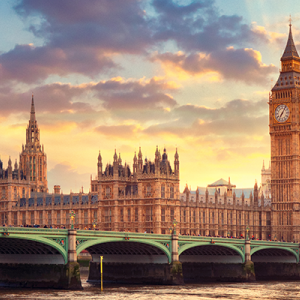31 March 2006
With education set to take the lion's share of public spending increases, what are the prospects for other departments? The chancellor will have little room to manoeuvre in the Comprehensive Spending Review
In 1997, Tony Blair stated that the first three priorities of his new Labour government would be 'education, education, education'. The focus of the chancellor's recent Budget speech was spending on schools. This suggests that, in this respect at least, there might not be much difference between a Blair government and one led by Gordon Brown.
However, if next year's Comprehensive Spending Review is to increase education spending as fast as in recent years then some government departments will be facing budget cuts and even the NHS — the large winner under previous Spending Reviews — would need to receive a much lower rate of increase in funding.
Alternatively, next year's Budget could announce a more generous than expected ceiling for public spending. However, this would be likely to require further tax raising measures, given that there is little room for manoeuvre against the chancellor's fiscal rules.
The CSR will set out spending plans for government departments in 2008/09, 2009/10 and 2010/11 — a period that is expected to cover both Blair standing down as prime minister and the next general election.
The figures contained in the recent Budget suggest that over this three-year period, total public spending will increase only by 1.9% a year in real terms, which is less than the expected growth in the economy.
If so, the chancellor would be more likely to meet his fiscal rules without having to resort to further tax increases. But the allocations to spending departments would be significantly less generous overall than under Spending Reviews to date.
Over the period from April 1999 to March 2008, total public spending is set to grow by an average of 4.1% a year in real terms — which is more than twice the rate of increase planned for the period to be covered by next year's CSR.
The chancellor also revealed in the Budget that over the period covered by the CSR, the Home Office is to have its spending frozen in real terms, while spending by the Department for Work and Pensions, the Treasury, Revenue & Customs and the Cabinet Office is to be cut by 5% in real terms per year.
These figures would allow the remainder of government spending to increase by 2.1%, which is still less than both the expected growth in the national economy and the increases that have occurred in recent years.
The Budget indicated that school spending is one area that is likely to be prioritised. In his speech, the chancellor revealed an aspiration to increase spending per school pupil in state schools to the average level in the private sector in 2005, although he did not set out a timetable for achieving this.
He also unveiled the totals for capital spending on schools for each year through to 2010/11, but not overall education spending. Over the period from April 1999 to March 2008, he is set to increase education spending by an average of 5.6% a year in real terms. But continuing to increase spending at this rate would involve some tough choices elsewhere.
The 2005 Labour Party election manifesto contains a commitment to increase overseas development assistance to 0.7% of national income by 2013. This would require ODA spending to increase by an average of 10.4% a year in real terms from April 2008 onwards.
Since Labour came to power, spending on social security benefits and tax credits has on average grown in real terms by 2.2% a year. Given the chancellor's pledges to reduce poverty among both pensioners and families with children, it does not seem unreasonable to assume that it will continue to grow at this rate.
On the assumption that all other non-education and non-NHS spending — including on transport and defence — is frozen in real terms, to continue increasing education spending at 5.6% a year in real terms would leave real increases of just 2.8% a year for the NHS. This would be significantly lower than the 7.1% a year average allocated under Spending Reviews to date. It would also be below the 3.1% a year average increase in NHS spending under the Thatcher and Major premierships.
If, instead, we assume that the 3.1% average annual real increase under the Conservatives is a lower boundary for what might be acceptable to Brown, this would allow education spending to grow by 5.2% per year.
All this suggests that the chancellor in 2007 — whoever that might be — will need to make some very tough choices and that both the Budget and the CSR are likely to be more significant fiscal events than the 2006 Budget.
Carl Emmerson and Christine Frayne are respectively deputy director and senior research economist at the Institute for Fiscal Studies
PFmar2006

















